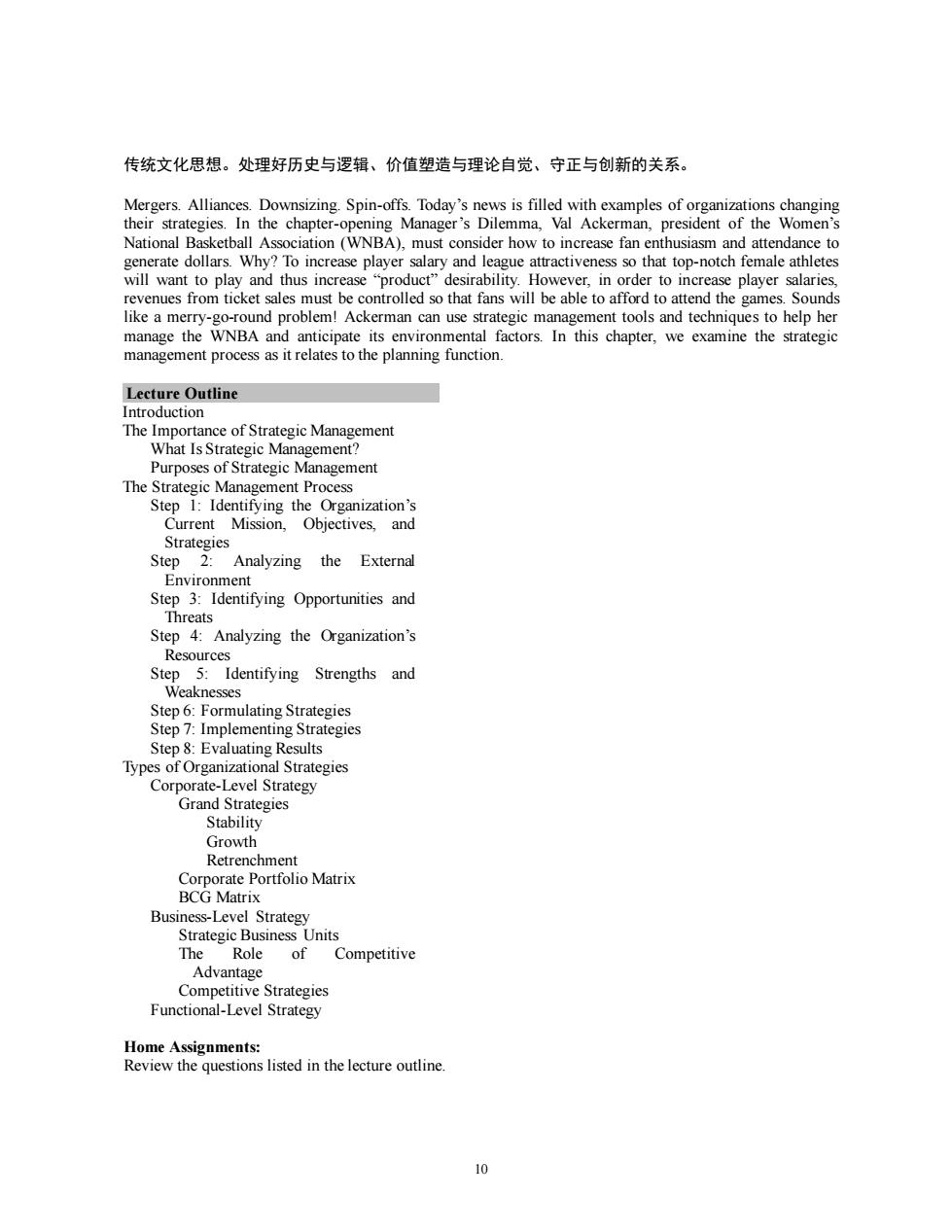正在加载图片...

传统文化思想。处理好历史与逻辑、价值塑造与理论自觉、守正与创新的关系 Mergers.Alli Today'slleh m to i ltheand ue acivene tha onnotch emale a e player salarie ket sales ontrolled so th he game Soun manage the WNBA and anticipate its environmental factors In this chapter. management process as it relates to the planning function. Lecture Outline The Importance of Strategic Manage What Is Strategic Management? Purposes of Strategic Management agement Pro ation's tives and rategies Ste Analyzing the External p'goTelisyingOportunitieamd Threats Step 4:Analyzing the Organization's Step6:Formulating Strategies Step 7:Implementing Strategies o Marx Business-Level Strateg Unit Competitive Advantage Competitive Strategies Functional-Level Strategy Home Assignments: Review the questions listed in the lecture outline 1010 传统文化思想。处理好历史与逻辑、价值塑造与理论自觉、守正与创新的关系。 Mergers. Alliances. Downsizing. Spin-offs. Today’s news is filled with examples of organizations changing their strategies. In the chapter-opening Manager’s Dilemma, Val Ackerman, president of the Women’s National Basketball Association (WNBA), must consider how to increase fan enthusiasm and attendance to generate dollars. Why? To increase player salary and league attractiveness so that top-notch female athletes will want to play and thus increase “product” desirability. However, in order to increase player salaries, revenues from ticket sales must be controlled so that fans will be able to afford to attend the games. Sounds like a merry-go-round problem! Ackerman can use strategic management tools and techniques to help her manage the WNBA and anticipate its environmental factors. In this chapter, we examine the strategic management process as it relates to the planning function. Lecture Outline Introduction The Importance of Strategic Management What Is Strategic Management? Purposes of Strategic Management The Strategic Management Process Step 1: Identifying the Organization’s Current Mission, Objectives, and Strategies Step 2: Analyzing the External Environment Step 3: Identifying Opportunities and Threats Step 4: Analyzing the Organization’s Resources Step 5: Identifying Strengths and Weaknesses Step 6: Formulating Strategies Step 7: Implementing Strategies Step 8: Evaluating Results Types of Organizational Strategies Corporate-Level Strategy Grand Strategies Stability Growth Retrenchment Corporate Portfolio Matrix BCG Matrix Business-Level Strategy Strategic Business Units The Role of Competitive Advantage Competitive Strategies Functional-Level Strategy Home Assignments: Review the questions listed in the lecture outline